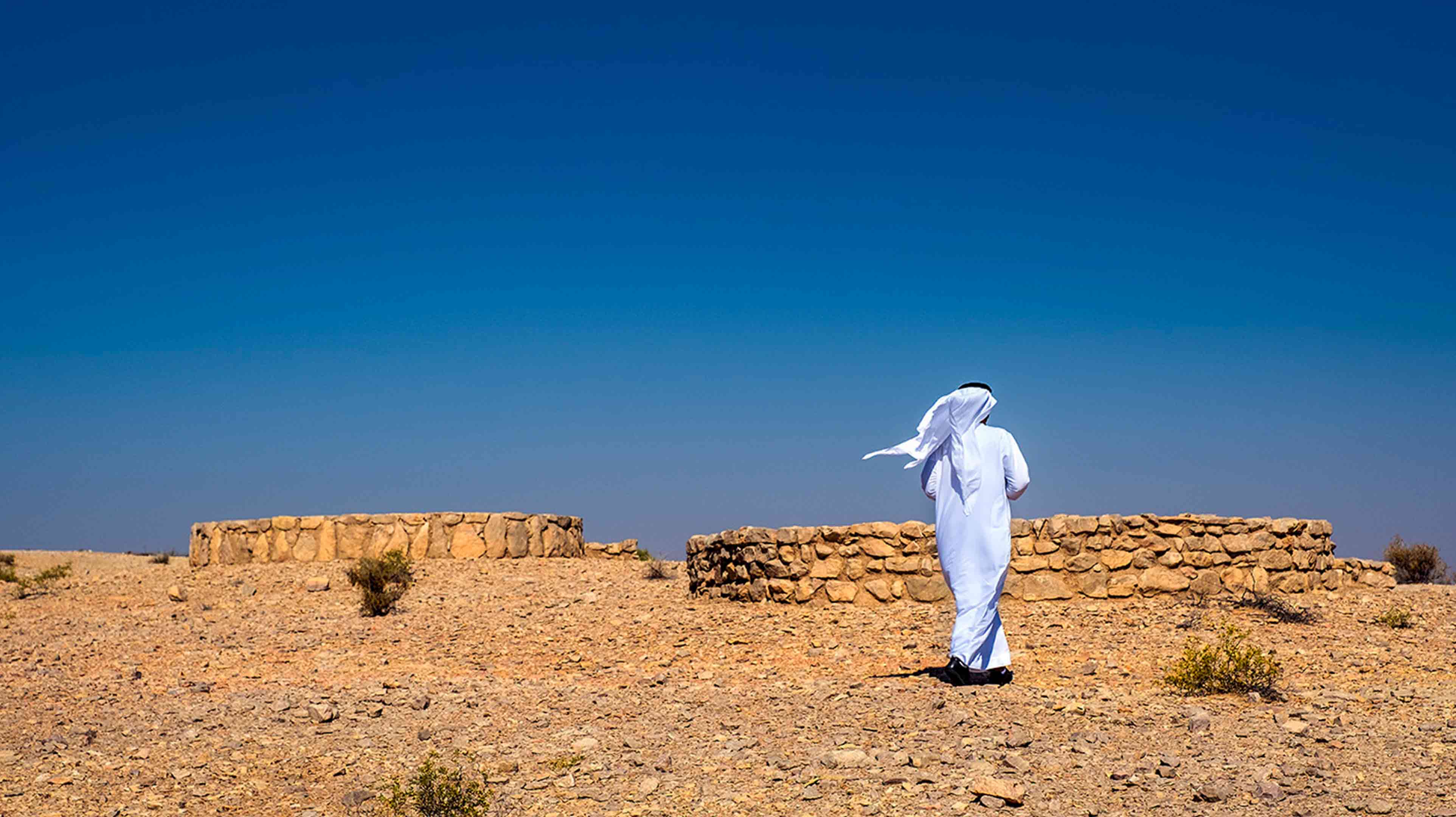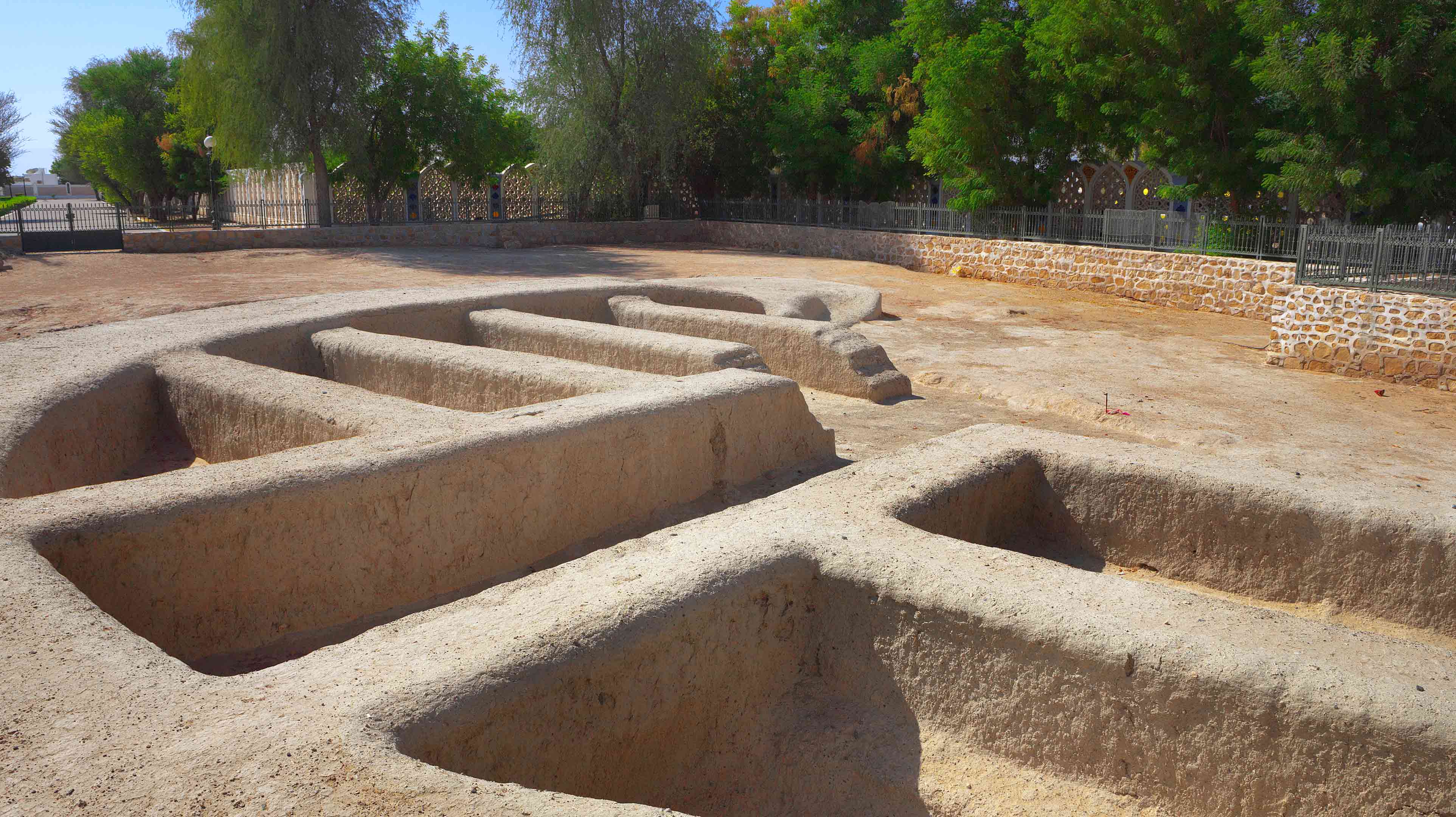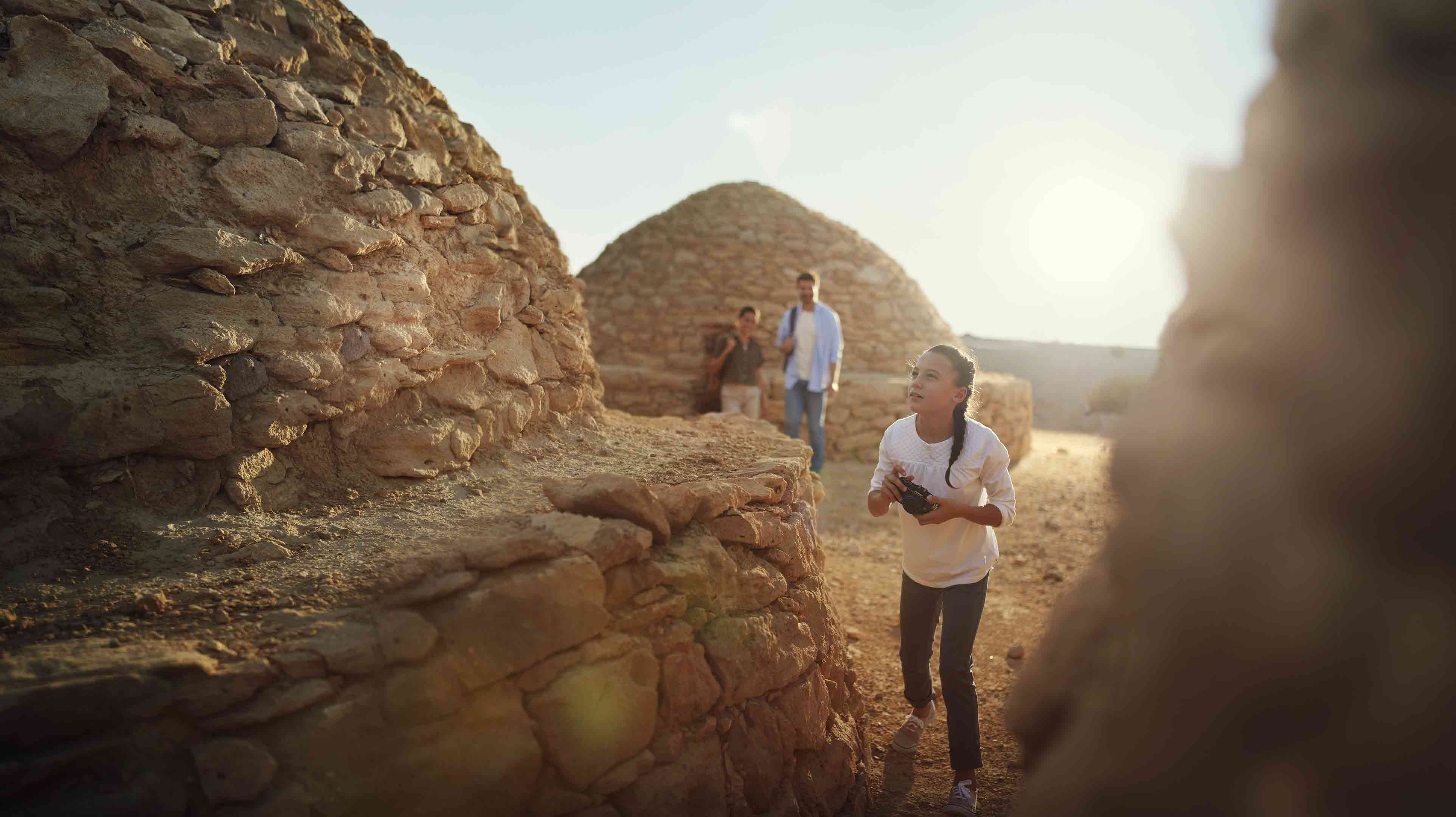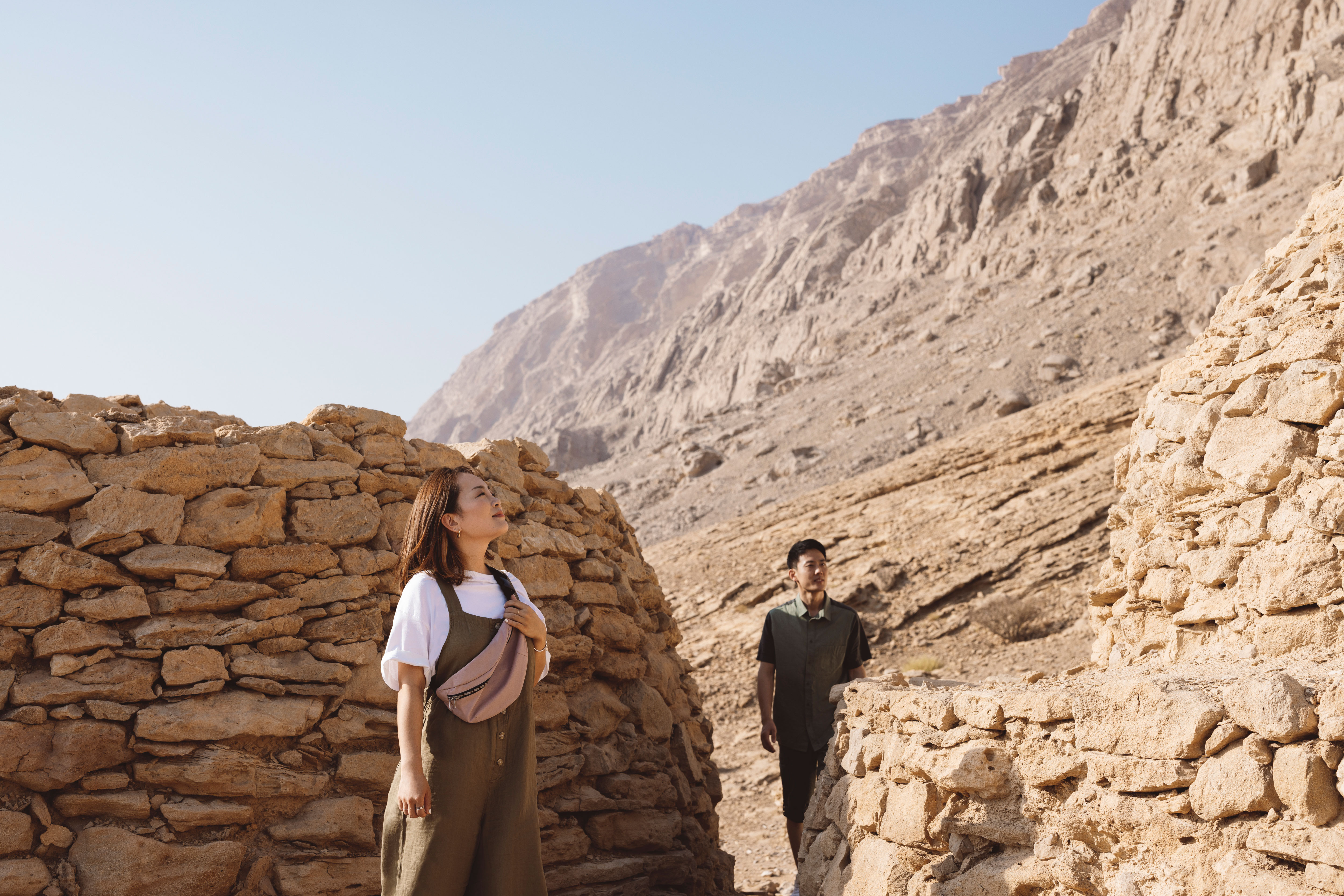Vedi tutto
Siti Patrimonio Mondiale UNESCO
Varie località, Al Ain
Un tempo oasi verde vitale sulla rotta carovaniera dagli EAU all'Oman, oggi Al Ain, in arabo "la sorgente", è la verdeggiante città-giardino parte del patrimonio dell'emirato, uno degli insediamenti abitati permanenti più antichi al mondo, nonché Patrimonio Mondiale UNESCO.
Dichiarata sito patrimonio della cultura dall'UNESCO, Al Ain accoglie luoghi di rilevanza tradizionale mondiale, fra cui le sei Oasi Al Ain e i siti archeologici di Bida Bint Saud, Jebel Hafit e Hili, antichi luoghi straordinari che rievocano le vicende della cultura preistorica e dell'occupazione dell'uomo in quest'area desertica fin dal Neolitico, invitandovi a immergervi nel passato.
Bida Bint Saud
A nord di Al Ain sono state scoperte e riportate alla luce diverse tombe antiche in pietra sopra l'imperdibile Gharn Bint Saud, un'imponente roccia stratificata che si erge dal deserto e dalle vicine fattorie. La più grande di queste tombe è rettangolare, lunga otto metri e ampia sei. Sebbene alcune delle tombe risalgano a ben 5.000 anni fa, molte di esse furono riutilizzate durante le Età del Bronzo e del Ferro.

Gli scavi in quest'area hanno riportato alla luce molti manufatti, fra cui delle spade a doppia lama. A 1.500 metri a ovest di Gharn Bint Saud è stato anche scoperto un falaj (antico sistema di irrigazione) di 3.000 anni fa: questa incredibile testimonianza di ingegneria dimostra le abilità dei locali, che erano in grado di ottenere l'acqua dalle profondità del terreno. Attualmente questo falaj, così come altri reperti dell'Hili Archaeological Park e di altri luoghi degli EAU e dell'Oman, costituisce la prima prova tangibile della diffusione di questo sistema di irrigazione in tutto il mondo. Nei pressi del falaj è stato anche ritrovato un grande edificio con mattoni in fango composto da una stanza centrale con basi di colonne risalenti a 3.000 anni fa. Questi siti dimostrano il ruolo chiave dell'area di Bida Bint Saud, e nel complesso di Al Ain, nell'ambito dello sviluppo della regione orientale di Abu Dhabi.
Parco Archeologico Hili
L'Hili Archaeological Site non soltanto rappresenta la primissima prova finora conosciuta di un villaggio agricolo negli Emirati Arabi Uniti, ma contiene anche altri villaggi risalenti all'Età del Bronzo (3.200 a.C. - 1.300 a.C.) e all'Età del Ferro (1.300 a.C. - 300 a.C.), luoghi di sepoltura e infrastrutture agricole. Il primo villaggio agricolo sorge nell'Hili Site 8 e risale al 3.000 a.C. Tra il 2.500 a.C. e il 2.000 a.C. l'insediamento di Hili si ampliò.

Questo arco temporale viene definito Umm an-Nar, prendendo il nome dall'isola a largo della costa di Abu Dhabi dove furono rinvenuti i primi resti di questa cultura. A Hili si trova la più grande concentrazione di tombe ed edifici risalenti a questo periodo degli EAU. Diverse strutture dell'Età del Bronzo situate all'interno dell'Hili Archaeological Park sono aperte al pubblico. Hili sorge nei pressi della Fossil Valley, un'area ricca di vari fossili che risalgono a migliaia di anni fa, quando era ancora sommersa dal mare.
Tombe di Jebel Hafit
Le tombe di Jebel Hafit, risalenti a 5.000 anni fa, segnarono l'inizio dell'Era del Bronzo degli EAU. Gli scavi effettuati dagli archeologi danesi nel 1959 portarono alla luce esempi di imbarcazioni in ceramica e manufatti in rame contenuti all'interno di queste tombe, a indicare l'importanza del commercio marittimo in tutto il Golfo Persico. Le tombe sono costituite da una camera singola e sono realizzate con pietre locali non lavorate e tagliate grossolanamente, a differenza invece delle successive tombe di Umm an-Nar, citate in precedenza, che furono realizzate con blocchi finemente lavorati e contenevano i resti di centinaia di persone.

